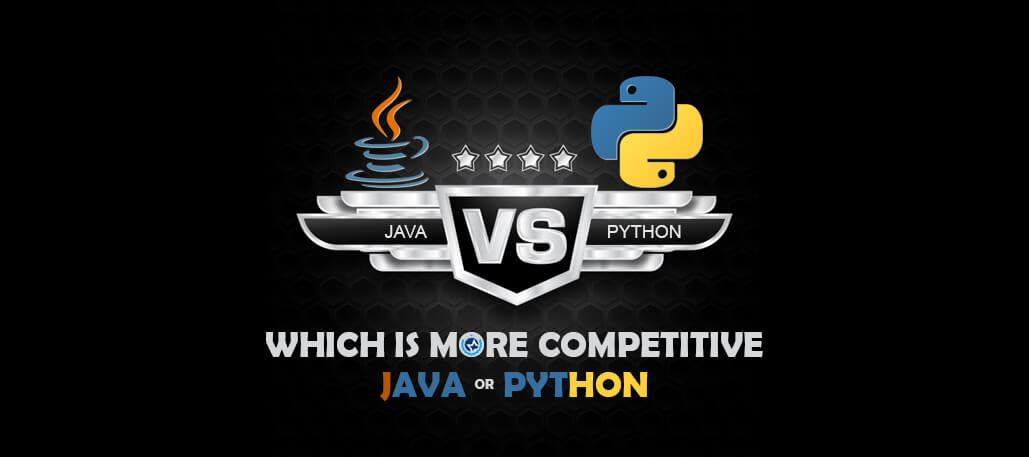
Which is More Competitive: Java or Python
From machine learning-game development-web development, Python has been shouldering Java at every step and according to logic, is the heir to the legacy. Let’s find out:
The aim behind any language is to match the needs of the projects with the features of the language. Both Java and Python are object-oriented, high-level programming languages which are typically stronger in certain situations.
Python was billed as the most popular programming language in 2018. It was one of the most visited tags on Stack Overflow as well as the fastest growing ones. Although the Hackerrank 2018 developer survey indicated that Python won over JavaScript as a most in-demand language by developers.
The biggest similarity between Python and Java is that everything is an object, support cross-platform, has immutable strings and has deep relatively standard libraries.
Besides these, there are some dissimilarities like Python has a distributed support while Java has a single corporate sponsor while Python has a distributed support. Although both belong to a common family of languages, they are syntactically apart, make use of whitespace sets, it is for anyone with substantial knowledge and experience of C-like use of braces and semi-colons.
Python and Java are compiled down to byte-code and subsequently run on virtual machines (which isolate the languages from the vagaries of the underlying hardware). Python does the same thing at runtime. Java does the same thing by a separate program known as Javac. The ability to do a just-in-time compilation of the parts of the bytecode down to the native instruction set of the running platform can produce significant speedups.
Python Vs Java: Why should we compare?
Although Java is faster than Python, still python is widely acceptable by developers across due to it’s powerful and easy to implement. The time consumed in debugging codes in Python is less when compared to languages like C, C++ or Java. Python has a lot to offer to its Java seniors and is interesting in both their similarities and differences.
Java has a number of tools and libraries like Weka, Java-ML, MLlib, and Deeplearning4j, which are leveraged to solve most of the cutting edge machine learning problems. Also, Java is pegged to be 25 times faster than Python. In terms of concurrency, Java beats Python.
Python has numerous in-built libraries for machine learning and artificial intelligence. Out of the most popular ones, the most popular libraries are TensorFlow (high-level neural network library for deep learning), Pytorch, scikit-learn (for data mining, data analysis, and machine learning), matplotlib, scikit (data visualization), Seaborn, etc.
There are times when researchers build their own libraries and upload them on GitHub or similar platforms so that they can be used by others. Python relishes developer community support and excessive features that make Python suitable for machine learning applications.
Java is at its best when comes to scaling applications, which makes it the best choice for building large and more complex ML and AI applications. According to researchers, if an application is to be built from scratch, it’s good to prefer Java as a programming language.
Difference Between Python And Java
Python or Java is an infinity war but still not the endgame of object-oriented programming. They have evolved with time and have separate identities and applications.
| Differences | Python | Java |
| Popularity | Popularity has increased recently | It is already very popular |
| Performance | Slower than Java in various implementations | It is relatively faster than Python |
| Syntax | Easy to learn, suitable for beginners and experienced programmers | It is complex and required knowledge of object-oriented programming, programming best practices and willingness to handle exceptions. |
| Cross-platform | Suitable | Suitable because of JVM. |
| Backend Framework | Django and Flask | Spring, Blade |
| Machine Learning libraries | Tensorflow, Pytorch | Weka, Mallet, Deeplearning4j, MoA |
| Support for Game Development Engines | Cocos, Padasd | JMonkeyEngine |
| Duck Typing | Dynamically typed | Statically typed |
| Support | Has a distributed support | Has a single corporate sponsor. |
| Code | Well structured, neat and readable with proper indentation | Code is not structured well |
| Language | Interpreted language | Compiled language |
An Inevitable Ending
Java programming landscape underwent few changes as Oracle introduced some alterations in its support model. Open JDK versions will need a regular update now or rely on third-party API’s like Amazon or Red Hat for security updates and bug fixes. Oracle support is paid.
In contrast to this, most web development companies India has been making use of Python as it supports dynamic typing has an open-source and unified support model and has a concise source code that runs quickly. The reason why java development companies prefer Java is slightly ahead in performance with its just-in-time compiler, but it isn’t suitable for latency-sensitive applications either, despite the fast speed.
While some software development companies might feel that Java’s browser plugin might be the reason behind low productivity, which is why Python wins parallel. Logical thinking leads us to conclude that language tools eventually turns whatever programmers create into machine code. Therefore selecting a particular language isn’t the matter of whether the machine will like it or not. Most of the times it is important to realize whether the programming language is able to fill the gap between the developer’s expectations and needs. Developers experience with the language, their style of coding and application development requirements are their basic points to be considered while deciding the productivity of a particular language.
